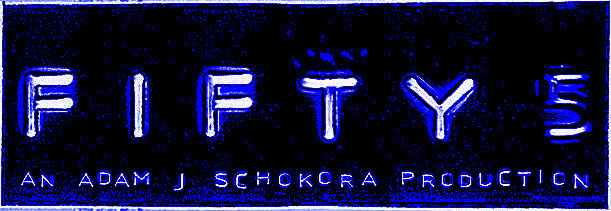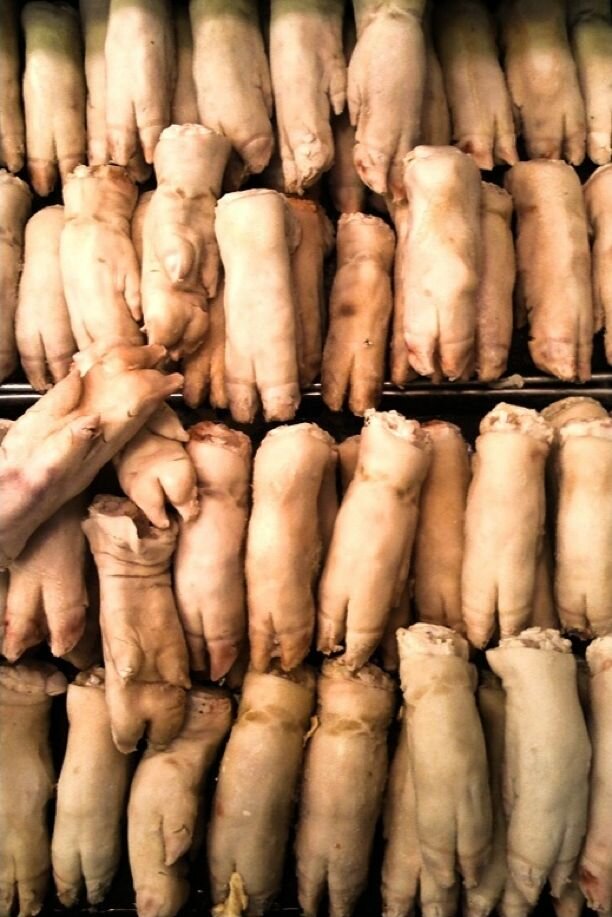friday 5 | e-magazines in china ::
Friday, July 31st, 2009:: under China’s current press rules, anyone who wants to launch a new magazine is required to first register with the General Administration of Press and Publication in order to obtain a publication license that is tied to distribution area and content type. These publication licenses are hard to come by, and practically out of reach of small start-ups who lack the backing of major state-owned publishers. There are grey-market ways around this, but for many magazines, it might be easier to reach a target audiences by publishing exclusively online, where regulation is significantly more relaxed. It’s also less of a risk, a way to roll out a magazine without the capital outlay involved in printing and distribution.
China’s e-magazine marketplace is home to small, short-lived titles as well as digital versions of major print publications. Many of them are downloadable in executable files of about 30M in size (which means they are only readable on Windows machines), or are viewable as a Flash application in a browser window. Although a small percentage take advantage of the multimedia possibilities offered by digital publication, the vast majority basically reproduce the experience of reading a print magazine, “enhanced” with virtual page-flipping, (cheesy) background music, and an animated advertisement or two.This also means that the text is frequently non-searchable (and non-copyable), but despite the limitations, e-magazines are still a surprisingly active sector of the mainland Chinese internet. Below is a snapshot of a few of the ways they’re used online in China.
celebrity brands ::
e-Magazines have been around for years in China, but it was only when Xu Jinglei launched Kaila in early 2007 that they really attracted much attention from the mainstream media. Xu and other celebrities have extended their brand to the e-publishing world, giving them some of the benefits of a personal magazine without the hassle of the print regulation system in China. Kaila builds each issue around a particular theme (the current issue is all about weddings) and features writing by well-known columnists and ordinary readers alike. In the past two years, the magazine has extended its brand to two new titles: Kaila Street Photos (开啦街拍), which focuses on pictures of fashionistas, including Xu herself, and Kaila Workplace (开啦职场), which is even more closely-targeted at urban white-collar life. As e-magazines, the presentation occasionally takes advantage of digital functionality like audio and video clips; the current issue of Workplace features a parody of a song by pop-group Shin done by a graphic design office in Shanghai, who sing about pulling long hours to edit their images (it’s also viewable on Youku). Readers can interact with the magazine through Kaila’s forums, and there’s a sub-board devoted to article ideas, including a post seeking submissions for the August issue. The new celebrity e-mag H-Sports (最体育) was launched on June 26 (Paolo Maldini’s birthday) by Huang Jianxiang, a high profile TV presenter with a long history in football commentary. The magazine takes advantage of Huang’s extensive connections in the field: the current issue features race-car driving novelist Han Han on the cover and a lengthy interview that Huang conducted with him. The e-mag presents the interview as a video, but it’s also available on Sina, which is one of the magazine’s sponsors and the host of its official blog. Two other celebrity e-mags that are fairly popular belong to the “Oprahs of China,” Yang Lan and Chen Luyu, and like Oprah’s O Magazine, they’re primarily aimed at women and feature the two TV personalities on the cover. Yang Lan’s is hosted on Tencent, while Chen Luyu’s is on Zcom.
online glossies ::
SoMode is an online magazine agency that publishes several fashion-oriented titles. Its flagship publications are Me (Me爱美丽), a women’s fashion magazine, and Wo (Wo男人志), an FHM-style men’s fashion and gadgets magazine. Both magazines are available as downloadable executable files (Windows only) and as a set of full-page images readable online. The men’s magazine gets the most publicity on the Internet because of its scantily-clad cover girls and racy photo sets, but the online BBS discussion forum is almost entirely devoted to the women’s magazine. SoMode also publishes a travel title, LaVie, an e-magazine aimed at 25-35 year-olds. There are flash graphics for most of the spreads in the magazine, which sometimes feel like adverts for hotels and furniture. Some sections of the magazine even have a smoky female voiceover announcing the labels and comfortable cotton clothes that are ideal attire for going outdoors. Here’s one for Sander Mulder, a design label from the Netherlands. Another online glossy magazine is Aria (ARIA阿丽雅), a music magazine published by Kuke, a digital library of classical and other music styles that are not mainstream pop. It’s a downloadable, Windows-only executable, but some of its articles are available online in text form as well. The full e-magazine features musical selections from Kuke’s library of albums, accompanied by liner notes and other text.
zines ::
The e-magazine format is also used by non-professionals looking to produce periodical publications. Although they’re not as readily readable as plain text blog entries and the like, PDF and flash-based e-mags are more convenient than print and less influenced by keyword filters and censorship than blogs and discussion forums. Besides, there’s a certain special feeling that comes with producing a single, 80-page digital publication that’s not found in a list of links to separate blog posts. New Realms of Fantasy and Science Fiction (新幻界) is a SF zine produced by fans of the genre that aims to provide a space for new writers to publish their material in an edited journal and for readers to critique SF and fantasy writing that appears in other venues. China’s SF and fantasy audience is fairly Internet-savvy, so the online community is quite active, with a Douban group that fosters interactivity between the magazine’s volunteer production team and its readers. As a PDF of text and images, it does not utilize the multimedia capabilities of other e-mags, but it has taken advantage of relaxed content regulation as compared to print magazines: the novelette Darkroom (暗室) by the well-known SF writer Han Song, which was featured in the June issue, had previously been killed by print magazine Science Fiction World for being too sensitive. The e-mag format is also a relatively easy way to produce a publication tied to a particular event. Young China Speaks (少年中国说), a magazine of politics written by post-80s Chinese young people, is affiliated with Wang Xiaodong and Huang Jisu, two of the authors behind the recent nationalist bestseller Unhappy China, and its launch was timed to the media frenzy surrounding that book’s release. While a short-term print magazine would have been overly expensive and logistically difficult, Young China Speaks was able to release five full issues before the Unhappy China phenomenon faded from public view. The magazine was produced in PDF format for maximum readability, and had an associated Douban ID and group which, along with the Sina blog, allowed for reader-writer interactivity.
digital print ::
Tons of print magazines have digital versions for sale (providers like Dragonsource handle digitization and subscription services for hundreds of titles ranging from popular fashion to arcane academia), and a number of titles turn up frequently on e-mag-specific websites. e-Magazine portal ZCom (see below) for example, has a digital version of China National Geography (中国国家地理) as a featured brand on its front page. The latest available issue, from March 2009, focuses on the Yangtze and the three other great rivers in China. The magazine is downloadable but cannot be read online, and is one of around 60 other travel e-magazines. ZCom also has an extensive list of business magazines, ranging from CBN Weekly (RMB 409 per year) to The Founder (RMB 229 per year). These digital versions are mostly identical to their print counterparts, meaning there’s virtually no online-specific content for any of these titles. In an interesting reversal of the print-to-web process, Blogbus, a blog host, recently launched a print magazine, iCity, that draws content from its stable of bloggers. iCity is oriented toward a well-off, urban, white-collar, creative readership (the same sort of people whose blogs make up most of the magazine’s content). It has published three bimonthly issues so far this year, all of which are available both online and in print. With netizens active in the production process as well as making up the readership, iCity is an interesting example of e-mag interactivity – it even claims to be “The First Interactive Chinese Magazine (中文第一本互动杂志).
e-Mag providers ::
Although some e-magazines are self-produced and independently hosted, the vast majority of China’s huge range of e-magazines find a home at one of a number of e-magazine providers. ZCom, founded in 2004, provides software for designing interactive e-magazines and offers hosting and subscription management services. It’s the 500-pound gorilla of e-magazines in China: it has a hosting deal with all of the four celebrity magazines mentioned in “celebrity brand” section above, and a large stable of digital versions of popular print titles to boot. In addition to providing reading material, ZCom also hosts a magazine-oriented SNS, where netizens can discuss particular titles, articles, or other e-mag-related topics. As befits an SNS portal that grew out of a photo-sharing service, Poco’s e-magazine section features the photography magazine Interphoto at the top of the front page. Poco’s flagship title is Pocozine, a fashion-oriented urban lifestyle magazine. Brand presence in Poco’s in-house titles matches the promotional campaigns that appear throughout the rest of its online offerings: ice-cream brand Magnum, for example, is running a game on Poco’s SNS (see this earlier Friday 5) and has a section in the current issue of Pocozine that features a number of photographers and a free photo instant message promotion (page 21). Poco also hosts digital versions of major titles like Betty’s Kitchen and Auto Magazine along with a vast array of e-magazine startups. iebook is an e-magazine developer with a slightly different focus: corporate and organizational publications. Listed on the front page are ready-made plans for e-pamphlets for companies and government agencies, advertising circulars, media and educational institutions, and wedding photography. iebook has a few brand-name clients, such as the Ray Li stable of fashion magazines.
/// AjS
[Friday 5 is the product of my work at Edelman Digital (China). Link here for the full Friday 5 archive. If you'd like to be added to the bilingual (English & Chinese) Friday 5 email distribution list, please send me an email at: adam DOT schokora AT edelman DOT com.]








































